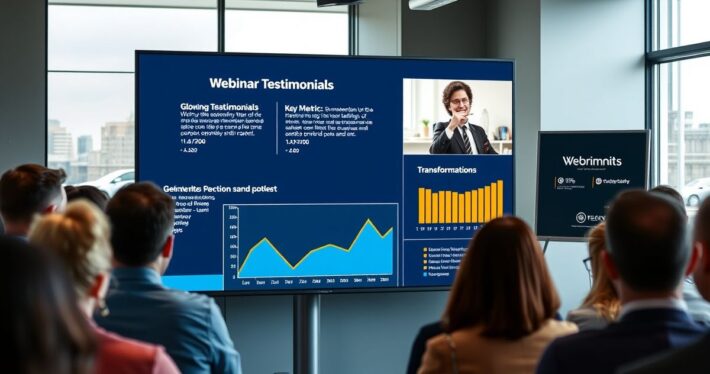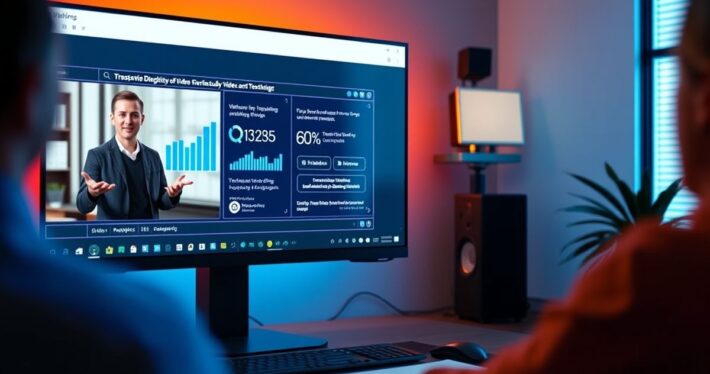Analyzing Failed Webinars: Lessons Learned

Analyzing Failed Webinars: Lessons Learned
Webinars have become a cornerstone of digital marketing, offering a unique blend of education, engagement, and conversion opportunities. Yet, not all webinars succeed. In fact, the failure rate of webinars is surprisingly high, with common issues ranging from poor attendance to lackluster engagement and dismal conversion rates. So, why do webinars fail, and what can you do to turn them around? Let’s break down the lessons learned from analyzing failed webinars and explore actionable strategies to create experiences that captivate and convert.
The Anatomy of a Failed Webinar
What makes a webinar fail? It’s rarely just one factor—it’s usually a combination of missteps that, when taken together, lead to underwhelming results. Here are the most common culprits:
-
Weak Topic Selection
A webinar’s success starts with its topic. If your subject matter doesn’t resonate with your audience or fails to address a pressing pain point, you’ll struggle to attract attendees. For example, a webinar titled “Introduction to Basic Accounting Principles” might sound valuable, but it won’t excite a room full of experienced CFOs. -
Poor Promotion
Even the most well-crafted webinar will flop if no one knows about it. Failed webinars often suffer from insufficient promotion, unclear messaging, or targeting the wrong audience. -
Lack of Engagement
Webinars are meant to be interactive experiences, not one-sided lectures. When attendees feel like passive spectators, they’re more likely to tune out—or worse, log off entirely. -
Overly Salesy Content
Nobody likes being sold to outright. If your webinar feels like an infomercial, you’ll alienate your audience and damage your credibility. -
Technical Issues
Glitches, poor audio quality, or platform malfunctions can derail even the most promising webinar. -
Weak Offers and Bonuses
A compelling offer is the cornerstone of webinar conversions. If your pricing, value stack, or bonuses don’t resonate, your attendees won’t take action.
Now, let’s dig deeper into these issues and uncover actionable solutions that can transform your next webinar from a flop to a triumph.
Lesson 1: Choose a Topic That Resonates
Your webinar topic is the foundation of your success. It needs to be specific, relevant, and compelling enough to grab attention. Instead of broad themes, focus on niche topics that directly address your audience’s pain points.
Real-World Example: A SaaS company hosting a webinar on “How to Automate Your Workflow in 30 Minutes” saw a 40% increase in attendance compared to their previous webinar on “Improving Productivity.” The difference? Specificity and actionable outcomes.
Lesson 2: Promote Strategically
Promotion isn’t just about sending out a few emails—it’s about creating a buzz. Use a multi-channel approach, including email marketing, social media, and even paid ads. Ensure your messaging highlights the unique value of your webinar and includes a clear call-to-action.
Pro Tip: Create a sense of urgency by emphasizing limited spots or early-bird bonuses.
Lesson 3: Foster Engagement
Engagement is the lifeblood of a successful webinar. Use polls, Q&A sessions, and interactive tools to keep your audience actively involved. Remember, a webinar isn’t a monologue—it’s a conversation.
Case Study: A marketing agency increased their webinar engagement rate by 25% by incorporating live polls and a dedicated Q&A segment. The result? Higher attendee satisfaction and more conversions.
Lesson 4: Balance Education and Sales
Your audience attends a webinar primarily for education, not to be sold to. Structure your content to provide value first, then introduce your offer naturally. Use storytelling and case studies to illustrate your points and build trust.
Example: Instead of saying, “Our product is the best,” share a success story: “Here’s how Sarah used our tool to double her revenue in three months.”
Lesson 5: Ensure Technical Excellence
Technical issues can derail even the best-prepared webinar. Test your equipment, internet connection, and webinar platform beforehand. Have a backup plan in case something goes wrong.
Quick Fix: Record a dry run of your webinar to identify and resolve any potential issues.
Lesson 6: Create Irresistible Offers
Your offer is the linchpin of your webinar’s success. Use tools like our Webinar Offer Builder to structure pricing, stack value, and position your offer effectively. Add high-value bonuses and guarantees to make your offer a no-brainer.
Real-World Strategy: A fitness coach increased conversions by 30% by bundling their webinar offer with exclusive bonuses like a 1:1 consultation and a free meal plan.
Bonus Tip: Analyze Your Performance
Every webinar, whether successful or not, provides valuable data. Review your metrics—attendance rates, engagement levels, and conversion rates—to identify areas for improvement.
Key Metric to Track: Drop-off rates can reveal where your content lost its spark.
Final Thoughts
Failed webinars aren’t just setbacks—they’re opportunities to learn and grow. By understanding the common pitfalls and implementing the strategies outlined above, you can create webinars that not only engage your audience but also drive meaningful results. Remember, the key to webinar success lies in preparation, execution, and continuous improvement.
So, the next time you plan a webinar, ask yourself: Is this topic resonating? Are we fostering engagement? Is our offer irresistible? By addressing these questions, you’ll be well on your way to hosting webinars that captivate, convert, and leave a lasting impression.



